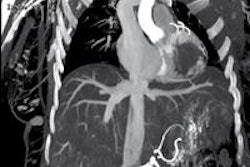Dutch researchers believe they have confirmed the accuracy and safety of a new sentinel node procedure that injects radiotracers in ligaments of women with epithelial ovarian cancer, helping them avoid more invasive, radical surgery.
In the study, published online on October 20 in the Journal of Nuclear Medicine, researchers identified sentinel nodes in all 21 patients and found that the procedure did not expose patients or healthcare providers to any excessive radiation.
Based on the results, lead author Dr. Marjolein Kleppe and colleagues from Maastricht University Medical Centre recommended additional research to further validate the clinical efficacy of the new technique.
High mortality rate
Previous studies have shown that epithelial ovarian cancer (EOC) has a high mortality rate due, in part, to the fact that 75% of patients are diagnosed with an advanced stage of the disease. The recommendation for patients with clinical early-stage EOC is to have a total abdominal hysterectomy, numerous peritoneal biopsies, and a pelvic and para-aortic lymph node dissection.
"Because positive lymph nodes can be missed during lymph node sampling, systematic lymphadenectomy is considered the gold standard," the authors wrote. "However, this is a radical procedure that is associated with obvious morbidity, including nerve and vessel injury, increased blood loss, increased operating time, and the formation of lymphocysts and lymphedema."
So, Kleppe and colleagues are offering an alternative approach designed to identify the sentinel node.
Past research found that if a negative sentinel node is found, chances are high that the remaining lymph nodes are not involved in the cancer, and the patient can avoid radical lymphadenectomy and associated morbidity.
"To the best of our knowledge, the injection of tracers into the ovarian ligaments has not been explored previously," Kleppe and colleagues added.
Patient cohort
The study cohort included 22 patients who were diagnosed and treated in Maastricht University Medical Centre for pelvic masses suspected to be malignant ovarian tumors. To determine the threat of radiation exposure, the surgeon, theater nurse, and pathologist wore ring dose meters during three procedures.
The proposed sentinel node technique involves the opening of the abdomen; before removal of the targeted ovary, 0.2 mL to 0.5 mL of blue dye and 20 MBq of a technetium-99m-labeled isotope (Nanocoll, GE Healthcare) were injected on the dorsal and ventral sides of the ovarian ligament and the suspicious ligament.
After 15 minutes, the mass was removed and physicians then examined different lymph node regions to look for sentinel nodes using a standard 12-mm straight gamma probe (Node Seeker, Intra Medical Imaging).
Upon review, researchers concluded that the sentinel node procedure was completed successfully in 21 of 22 patients (96%). A high number of adhesions in the 22nd patient prevented access to the ovarian ligaments without interfering with normal anatomy during the injection of the tracer.
At least one hot spot was identified with the gamma probe within 15 minutes after injection of the radioactive tracer. Final pathology tallied seven patients with benign tumors, eight women with borderline tumors, and six cases of malignant EOC.
All of the patients were able to tolerate the tracer with no allergic or adverse reactions reported.
| Sentinel node detection by gamma probe | ||
| Tumor location | Histology | No. |
| Ovary | Benign | 7 |
| Borderline | 8 | |
| Malignant | 5 | |
| Ovary & endometrium | Both malignant | 1 |
| Total | 21 | |
Radiation exposure
As for radiation exposure to the operating team, the researchers found that only the ring dose meter on the surgeon registered above background radiation levels. Total dose during three procedures was 0.06 mSv on the physician's dominant hand and 0.17 mSv on the nondominant hand.
"The difference between the dominant hand and the nondominant hand is caused by the operating technique," the study authors explained. "The nondominant hand presents the tissue to be removed by the dominant hand, resulting in a shorter distance between nondominant hand and radioactive tissue."
Based on the results, Kleppe and colleagues concluded that the procedure is "feasible and promising" and "safe for the involved personnel." The findings also suggest that the technique "could potentially be incorporated into routine clinical practice in patients with early-stage ovarian cancer."
One question does remain: When is the appropriate time for the detection of positive lymph nodes? The authors suggested the time period "should be long enough to allow the tracers to be transported to the sentinel nodes, but an increased lag time requires prolonged general anesthesia and increased costs. Therefore, delaying surgery for a period longer than 15 minutes was deemed not to be feasible in daily practice.
Kleppe and colleagues currently are planning to move forward with a multicenter prospective trial to explore the benefits of the sentinel node technique.



















